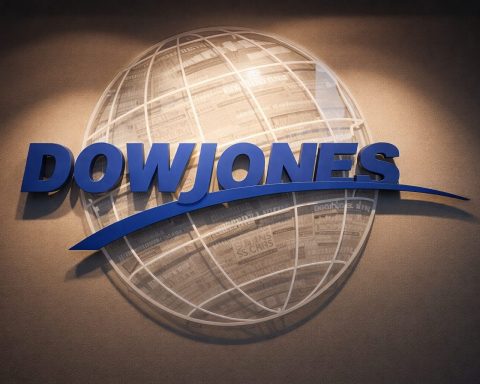- Tech rally accelerates: The Nasdaq-100 is up roughly 19% in 2025, fueled by a frenzy of AI-driven investing that’s propelled tech stocks to record levels [1].
- Nvidia near highs:Nvidia (NVDA) trades around $182, just shy of its all-time peak (~$195) after a 56% revenue jump last quarter (to $46.7 billion) on insatiable AI chip demand [2] [3]. 38 of 47 analysts rate NVDA a “Buy” with price targets ~15% above current levels [4].
- Microsoft’s AI momentum:Microsoft (MSFT) posted 18% sales growth last quarter (reaching $76.4 billion) amid booming cloud/AI demand [5]. Shares near record highs (~$514 vs. $555 peak) [6]. 32 of 34 analysts say “Buy” with ~20% upside (target ~$618); bulls like Wedbush’s Dan Ives see MSFT on track for a $5 trillion valuation as its AI push accelerates [7].
- Alphabet surges on ads & AI:Alphabet (Google, GOOGL) is trading around $255, at record territory and up 30% YTD (including a 38% leap in Q3) [8]. Ad revenues are rebounding – Q2 Search ads +11.7%, YouTube +13%, driving total sales +13% (to $96.4 B) [9] – while Google Cloud is +32% and profitable [10]. Analysts cite a “clear recovery” and “AI leadership,” hiking targets (e.g. $310 at Scotiabank) [11]. Consensus expects ~16% revenue and 27% EPS growth this year [12].
- Meta’s big comeback:Meta Platforms (META) trades near $700 (off August’s $789 peak) and is +25% in 2025 [13]. Q2 revenue jumped 22% (to $47.5 B) with 43% margins, and daily users hit 3.48 billion fueling double-digit ad growth [14]. Wall Street is overwhelmingly bullish: 44 analysts rate Meta a “Strong Buy” with an ~$825 average target (many see $850+$) [15]. Despite heavy AI & metaverse investments, Meta’s valuation (~25× earnings) is deemed reasonable versus peers [16].
- AMD rides AI deals:Advanced Micro Devices (AMD) has soared ~80% in 2025 to record highs (~$238) [17]. Blockbuster AI chip deals – supplying OpenAI (which took warrants for ~10% of AMD) and Oracle’s plan to deploy 50k AMD GPUs – sent the stock up 30% in one day [18]. Firms like Jefferies and HSBC boosted price targets to $300–$310 [19]. While AMD still trails Nvidia in data-center AI, it’s seen as an “open” challenger capturing new demand. The stock isn’t cheap (~40× 2026 earnings) [20], but AMD expects these partnerships to generate “tens of billions” in future revenue [21], underpinning a robust growth outlook.
AI Boom Powers Tech Sector Higher
A wave of AI optimism is lifting tech stocks across the board. Investors have piled into semiconductor makers, cloud providers and internet platforms positioned to benefit from surging demand for AI chips and services. The result: U.S. tech giants are reaching new milestones in 2025. The tech-heavy Nasdaq index has vastly outperformed the broader market, reflecting confidence that AI-driven growth will continue to fuel strong earnings for industry leaders [22].
Yet even amid this broad rally, these five companies stand out. Nvidia, Microsoft, Alphabet (Google), Meta Platforms, and AMD each combine market leadership with fresh catalysts – from breakthrough product demand to revitalized revenue streams – that make them compelling “buy” candidates right now. Below, we delve into recent developments, expert outlooks, and why analysts see further upside in each of these tech bellwethers as of late October 2025.
Nvidia (NVDA): AI Chip Leader Near Record Highs
Nvidia’s stock has been on an unstoppable tear, driven by its dominance in the chips that power generative AI. Shares are trading around $182 – within sight of their all-time high (~$195) after a brief mid-month dip [23]. The company’s latest earnings underscored explosive growth: revenue rocketed 56% year-over-year to $46.7 billion last quarter, an unprecedented jump for a company of Nvidia’s size [24]. Astonishingly, 88% of those sales came from its data-center GPUs – the silicon brains behind large AI models – sending Nvidia’s market cap above $4.4 trillion at one point [25].
That AI feeding frenzy shows few signs of abating. Nvidia’s next quarterly report (due Nov. 19) is widely expected to be another “blockbuster” as demand stays red-hot [26]. Wall Street remains decidedly bullish. “Despite Nvidia’s lofty valuation, most analysts remain upbeat,” notes TechStock², reporting that 38 out of 47 analysts rate NVDA a Buy with average price targets in the $210–$220 range – about 15% above current levels [27]. Firms like Morgan Stanley and HSBC have highlighted Nvidia as a top pick to play the AI revolution, arguing its near-monopoly in high-end AI chips gives it sustained pricing power.
To be sure, there are risks on the radar. Rival AMD’s recent big wins (more on that below) signal rising competition, and U.S.-China trade tensions threaten roughly 10–15% of Nvidia’s revenue that comes from Chinese buyers [28]. Any new export curbs on advanced chips could sap some sales. Valuation is rich – over ~50× earnings – leaving little margin for error if growth wobbles. But so far, Nvidia is delivering on the hype: it’s rapidly launching next-gen products and even investing in infrastructure (joining a $40 billion deal to acquire Aligned Data Centers) to secure capacity for future AI computing [29]. With AI spending in “early innings,” Nvidia’s unparalleled position has analysts predicting it will “fire on all cylinders” into 2026. For investors betting on the AI gold rush, Nvidia remains the premier pick [30] [31].
Microsoft (MSFT): Cloud Titan Betting Big on AI
Microsoft’s stock is hovering near record highs, buoyed by its dual strength in cloud computing and artificial intelligence. At around $514, shares are just below July’s peak (~$555) and up about 23% year-on-year [32] [33]. This rally reflects Microsoft’s standout financial performance in recent quarters. In its fiscal Q4 (April–June 2025), revenue climbed 18% to $76.4 billion – the company’s fastest growth since 2023 – while earnings trounced expectations [34]. For the full fiscal 2025, sales rose 15% (to $281.7 B) with operating income up 17%, underscoring healthy expansion across Azure cloud services, Office software, and even its Xbox gaming unit [35] [36]. Notably, Azure – Microsoft’s cloud platform – saw revenue jump 39% last quarter, an acceleration that outpaced Amazon’s AWS (~17% growth) and nearly matched Google Cloud’s 32% [37]. The company appears to be gaining cloud market share, a testament to its broad enterprise reach and aggressive push into AI.
Indeed, CEO Satya Nadella has called the AI era a “tectonic” shift and is reorganizing Microsoft to seize it [38]. Recent moves highlight an all-in approach: Microsoft inked a 5-year, $17.4 billion deal with startup Nebius to secure tens of thousands of Nvidia GPUs for AI supercomputing [39], and teamed up with Nvidia and BlackRock to buy a $40 billion stake in data center operator Aligned – shoring up capacity for AI workloads [40]. The company is also weaving AI into everything from its Office apps (via the Copilot assistant) to cloud offerings for finance (through a new London Stock Exchange partnership) [41]. This heavy investment spree (capital spending is hitting record levels) may crimp near-term margins, but executives say it’s vital to meet booming demand and will “pay off over time” as AI services scale [42].
Wall Street, for its part, is unabashedly optimistic. 32 of 34 analysts covering Microsoft rate it a Buy, with a consensus price target around $618 – roughly 20% above today’s price [43]. Some top bulls see even more upside: targets in the $650–$700+ range, citing Microsoft’s unrivaled presence in both enterprise software and cloud infrastructure [44]. Wedbush analyst Dan Ives recently projected Microsoft is on a path toward a $5 trillion market cap, calling its AI opportunity “unmatched” as the company monetizes AI across its ecosystem [45]. The next catalyst is just around the corner: Microsoft reports earnings on October 29, and investors will be eyeing whether AI tailwinds are keeping growth in high gear [46] [47]. Given its strong track record and robust guidance, Microsoft remains a cornerstone tech holding – “resilient” even as it spends big on the future [48].
Alphabet (Google, GOOGL): Ad Rebound and AI Drive Record Highs
Alphabet’s Google has reasserted itself as a stock-market powerhouse in 2025, shaking off the digital advertising slump of years prior. GOOGL shares recently hit all-time highs around $255–$256, putting the company on the cusp of a $3 trillion market valuation [49] [50]. Year-to-date the stock has surged over 30%, massively outperforming the S&P 500 (~12%) as Google’s core businesses rev back up [51]. In fact, Q3 2025 was one of Alphabet’s best quarters ever (+38%) – its biggest jump in two decades – amid “booming” trends and investor euphoria over AI [52].
Recent earnings confirm the momentum. In Q2 2025, Google’s revenue grew 13% to $96.4 billion [53], a “remarkable pace” for such a large firm. Advertising led the way: Search ad sales rose 11.7% (to $54.2 B) and YouTube ad revenue climbed 13% (to $9.8 B) as marketers returned to spending [54]. This marks a clear turnaround from the flat ad growth of 2022–23, aided by new AI-driven features that keep users engaged (Google’s AI chat in search hasn’t cannibalized ads, for example, and YouTube’s Shorts are drawing in ad dollars) [55] [56]. Simultaneously, Google Cloud has emerged as a second growth engine – Q2 cloud revenue soared 32% to $13.6 B [57] and, importantly, the cloud division swung to profitability (~21% margin) for the first time [58] [59]. That milestone has long been awaited by investors, turning what was a drag on earnings into a positive contributor.
Alphabet isn’t resting on its laurels. It has spent the fall unveiling a slew of AI initiatives: committing $24 billion+ to build new data centers and AI supercomputers across the U.S. and Asia [60], launching its AI-infused Pixel 10 phones, and debuting advanced AI models (including a 27-billion-parameter model for researchers). One analyst called it a “once-in-a-generation investment cycle” as Google goes “all in” on AI transformation [61]. Wall Street likes what it sees – 30+ analysts rate GOOGL a Buy. In recent weeks, Scotiabank boosted its target to $310, citing a “clear recovery” in ads, and BMO to $294 on Google’s “AI leadership” in Search and cloud [62]. The average target now sits in the high-$250s [63], implying modest upside, but many bulls argue estimates remain conservative if ad growth and cloud wins continue. Alphabet’s upcoming Q3 report (due Oct. 29) is forecast to show mid-teens revenue growth and ~27% higher EPS for full-year 2025 [64]. A strong result could push the stock into uncharted territory above $260, analysts say [65].
Risks do exist – regulators globally are scrutinizing Google’s dominance (antitrust suits, new EU digital rules) [66], and heavy AI spending will pressure near-term margins. But after underperforming some peers in 2024, Alphabet has firmly regained its stride. Its combination of an ads rebound and deep AI investment (from self-driving cars to cloud deals like being the 2028 Olympics’ official cloud provider) gives investors both a reliable profit engine and exposure to the next tech frontier [67]. As long as people keep searching, clicking, and streaming, Google’s cash machine – now turbocharged with AI – makes Alphabet a top pick in tech.
Meta Platforms (META): Social Media Titan with AI Upside
Meta Platforms – the parent of Facebook, Instagram, and WhatsApp – has staged a remarkable comeback this year. The stock has rallied to about $700 per share (as of mid-October), up ~25% in 2025 [68] after weathering a dip last year. It hit a record $789 in August before a modest pullback [69]. At a $1.8 trillion market cap, Meta is now one of the world’s most valuable companies, yet its valuation (~25× forward earnings) is still lower than many peers like Nvidia or Microsoft [70] [71]. That reflects a business that is growing rapidly again while keeping costs in check – a compelling combination for investors.
Meta’s latest financials were strong across the board. In Q2 2025, revenue jumped 22% YoY to $47.5 billion [72], marking a return to robust double-digit growth. Advertising, which makes up the bulk of revenue, has roared back: ad impressions were up 11% and average prices ~9% higher, thanks in part to improved AI-driven targeting on Meta’s platforms [73]. The company posted a hefty $18.3 billion in net profit for Q2 (+36% YoY) [74], translating to a 43% operating margin – indicating that Meta’s efficiency measures (“year of efficiency” cost cuts in 2023) are paying off. Daily active users across Meta’s family of apps hit 3.48 billion – nearly half the world’s population – giving it unparalleled reach for advertisers [75]. Importantly, Meta has also moderated expense growth (OPEX was up just ~12% in that quarter [76]), which boosted its margins and reassured investors that heavy spending on new initiatives can be balanced with profitability.
Wall Street has taken notice. Meta is universally loved by analysts at the moment – 44 out of 44 tracked analysts rate the stock a “Strong Buy” [77]. Their median 12-month price target is around $850, implying meaningful upside, and some are even higher (Mizuho and Cantor Fitzgerald see ~$920; a few bullish forecasts top $950) [78]. As Forbes noted, Meta’s bull run “seems likely” to clear $800 again, given its solid earnings and a valuation still modest relative to Google or Microsoft [79]. The company itself guided for Q3 revenue of $47.5–50.5 B (around 20% YoY growth) and roughly $199 B for full-year 2025 (~21% growth) [80], signaling confidence that the ad momentum will continue through the holiday quarter.
Beyond the core social media business, Meta is investing aggressively in AI and the metaverse to drive its next leg of growth. On the AI front, it has inked multi-billion dollar deals to ensure it has enough computing muscle – including a $14 B contract with CoreWeave for cloud GPUs and a $10 B+ partnership to run Meta’s AI workloads on Google Cloud [81]. Meta even took a 49% stake in AI startup Scale AI for $14.3 B to bring in top talent and technology [82]. These moves aim to support Meta’s AI endeavors like its new “Meta AI” assistant (which will soon start personalizing users’ feed content via generative AI chats) [83]. In hardware, Meta just launched Ray-Ban Meta “Display” smart glasses with built-in AI features, a bold step toward mainstream AR – though early demos hit snags [84]. Meanwhile, the Reality Labs division continues developing the Quest mixed-reality headsets and other metaverse tech, albeit with a prudent eye on costs after multibillion-dollar losses in prior years.
There are challenges: Regulators in the EU are imposing stricter rules on targeted ads and data usage (enforcing things like an easy opt-out for algorithmic feeds) [85]. Competition from TikTok for user attention remains intense. But Meta’s recent legal win – a U.S. judge in September dismissed a major antitrust class-action that was looming [86] – has at least cleared one cloud of uncertainty. With its user base still expanding and engagement holding strong (Reels usage is growing, etc.), Meta is proving it can evolve. The market is effectively viewing Meta as a “growth-at-scale” story: a social networking empire that is pivoting into an AI/VR future while still churning out enormous profits today [87]. That narrative, plus a relatively lower earnings multiple than other Big Tech names, makes META a favored pick for investors seeking both stability and innovation in tech. As long as ad dollars keep flowing and Meta executes on its AI vision, analysts see more room to run for this stock.
Advanced Micro Devices (AMD): Chip Challenger Riding an AI Wave
Chipmaker AMD has transformed into one of 2025’s hottest stocks, thanks to a couple of headline-grabbing AI deals that ignited investor excitement. The stock recently surged to ~$238, a fresh 52-week high, after climbing nearly 80% year-to-date [88]. By comparison, Nvidia’s up ~40% in 2025 and Intel is roughly flat [89] – underscoring how dramatically AMD has outperformed its semiconductor peers amid the AI boom [90].
The catalyst was two blockbuster partnerships announced in October that position AMD as a formidable contender in AI hardware. On October 6, AMD revealed a landmark agreement with OpenAI (the creator of ChatGPT) to supply a huge quantity of advanced Instinct AI accelerators, amounting to ~6 gigawatts of compute capacity over several years [91]. As part of the deal, OpenAI received warrants to buy up to ~10% of AMD’s shares – a strong vote of confidence in AMD’s technology [92]. The news sent AMD stock skyrocketing ~30% in a single day, adding ~$80 billion in market cap [93]. Just a week later, on Oct. 14, Oracle announced it will deploy 50,000 of AMD’s next-gen GPUs in building out its cloud “superclusters,” choosing AMD for an AI infrastructure initiative that will roll out in 2026–27 [94] [95]. These back-to-back wins dramatically raise AMD’s profile in data-center AI – a space long dominated by Nvidia – and suggest some top tech players are eager for alternatives to Nvidia’s chips.
Wall Street has wasted no time recalibrating expectations. Analysts at Jefferies and Wolfe Research each hiked their 12-month targets to $300 for AMD (from around $200 before), and HSBC followed with a street-high $310 target [96]. Many analysts shifted to bullish stances; roughly 60–65% of ratings on AMD are now Buys [97]. (A few holdouts like Goldman Sachs remain Neutral, citing the stock’s big run-up, with more cautious ~$210 targets [98].) The bullish thesis: AMD’s foothold in the AI market is strengthening, which could translate into explosive growth in the coming years. Company executives certainly talk in superlatives – AMD’s data center chief called the OpenAI deal “transformative… for the dynamics of the industry,” and CEO Lisa Su said it’s a “win-win” enabling the world’s most ambitious AI projects [99]. AMD’s CFO noted the partnerships should generate “tens of billions of dollars” in revenue and be “highly accretive” to earnings over time [100]. In fact, AMD projects these AI deals could yield $100 billion+ in new revenue through 2029 [101] – a staggering figure that, if realized, would firmly entrench AMD as a top-tier chip supplier.
It’s important to note that Nvidia still holds the crown in AI silicon – an estimated >90% share of the current market [102] – and AMD’s ascent will take time. The OpenAI chips won’t be delivered until 2026, and Oracle’s deployment is likewise a late-2020s timeline [103]. In the near term, Nvidia “continues to sell every AI chip it can produce,” as Reuters observed, so AMD’s deals don’t threaten Nvidia’s dominance immediately [104]. Additionally, AMD’s stock now prices in a lot of future success. At ~40× 2026 earnings (and an eye-watering ~125× trailing P/E) [105], the valuation is far above its historical norm. One strategist cautions that investors have already “priced in extremely strong AI-driven growth”, leaving “little room for error” if AMD stumbles or if AI demand moderates [106].
So far, though, the broader market exuberance around AI shows no sign of cooling – and AMD has firmly hitched itself to that engine. The company is also firing on other cylinders (its traditional CPU business for PCs and servers remains competitive, and new GPU product launches are on deck). With tech indexes at records and an “AI-fueled rally” carrying semiconductor stocks higher [107] [108], AMD offers a compelling mix of momentum and narrative. It’s a higher-risk, higher-reward pick among big tech names: investors are essentially betting that AMD’s partnership wins are a harbinger of much bigger things to come. If AI demand continues to expand exponentially, AMD – now armed with marquee clients and a war chest of R&D – could see substantial upside beyond its recent highs. That prospect makes it one of the best tech stocks to watch and buy for those looking to ride the AI hardware wave alongside the more entrenched giants.
Bottom Line: The broader tech sector’s rally this year has been extraordinary, but these five companies have distinguished themselves with strong fundamentals and direct leverage to crucial tech trends. From AI chips (Nvidia, AMD) to cloud and software (Microsoft, Google) to a rejuvenated digital ads empire (Meta), each is positioned to capitalize on high-growth opportunities in the near and medium term. Analysts largely agree that despite sometimes lofty valuations, these tech leaders have earned their premiums through innovation and execution – and they still see significant upside ahead [109] [110]. As earnings season unfolds and we head into 2026, investors will be watching whether these bullish forecasts pan out. For now, the combination of recent positive news, expert optimism, and ongoing market momentum make Nvidia, Microsoft, Alphabet, Meta, and AMD the top tech stocks to consider buying as of October 2025. Each offers a unique avenue into the AI-driven tech boom that’s reshaping industries – and potentially, portfolios – at a breakneck pace.
Sources: TechStock² (TS2.tech) [111] [112] [113] [114] [115] [116] [117], Reuters, Yahoo Finance, Bloomberg.
References
1. ts2.tech, 2. ts2.tech, 3. ts2.tech, 4. ts2.tech, 5. ts2.tech, 6. ts2.tech, 7. ts2.tech, 8. ts2.tech, 9. ts2.tech, 10. ts2.tech, 11. ts2.tech, 12. ts2.tech, 13. ts2.tech, 14. ts2.tech, 15. ts2.tech, 16. ts2.tech, 17. ts2.tech, 18. ts2.tech, 19. ts2.tech, 20. ts2.tech, 21. ts2.tech, 22. ts2.tech, 23. ts2.tech, 24. ts2.tech, 25. ts2.tech, 26. ts2.tech, 27. ts2.tech, 28. ts2.tech, 29. ts2.tech, 30. ts2.tech, 31. ts2.tech, 32. ts2.tech, 33. ts2.tech, 34. ts2.tech, 35. ts2.tech, 36. ts2.tech, 37. ts2.tech, 38. ts2.tech, 39. ts2.tech, 40. ts2.tech, 41. ts2.tech, 42. ts2.tech, 43. ts2.tech, 44. ts2.tech, 45. ts2.tech, 46. ts2.tech, 47. ts2.tech, 48. ts2.tech, 49. ts2.tech, 50. ts2.tech, 51. ts2.tech, 52. ts2.tech, 53. ts2.tech, 54. ts2.tech, 55. ts2.tech, 56. ts2.tech, 57. ts2.tech, 58. ts2.tech, 59. ts2.tech, 60. ts2.tech, 61. ts2.tech, 62. ts2.tech, 63. ts2.tech, 64. ts2.tech, 65. ts2.tech, 66. ts2.tech, 67. ts2.tech, 68. ts2.tech, 69. ts2.tech, 70. ts2.tech, 71. ts2.tech, 72. ts2.tech, 73. ts2.tech, 74. ts2.tech, 75. ts2.tech, 76. ts2.tech, 77. ts2.tech, 78. ts2.tech, 79. ts2.tech, 80. ts2.tech, 81. ts2.tech, 82. ts2.tech, 83. ts2.tech, 84. ts2.tech, 85. ts2.tech, 86. ts2.tech, 87. ts2.tech, 88. ts2.tech, 89. ts2.tech, 90. ts2.tech, 91. ts2.tech, 92. ts2.tech, 93. ts2.tech, 94. ts2.tech, 95. ts2.tech, 96. ts2.tech, 97. ts2.tech, 98. ts2.tech, 99. ts2.tech, 100. ts2.tech, 101. ts2.tech, 102. ts2.tech, 103. ts2.tech, 104. ts2.tech, 105. ts2.tech, 106. ts2.tech, 107. ts2.tech, 108. ts2.tech, 109. ts2.tech, 110. ts2.tech, 111. ts2.tech, 112. ts2.tech, 113. ts2.tech, 114. ts2.tech, 115. ts2.tech, 116. ts2.tech, 117. ts2.tech










